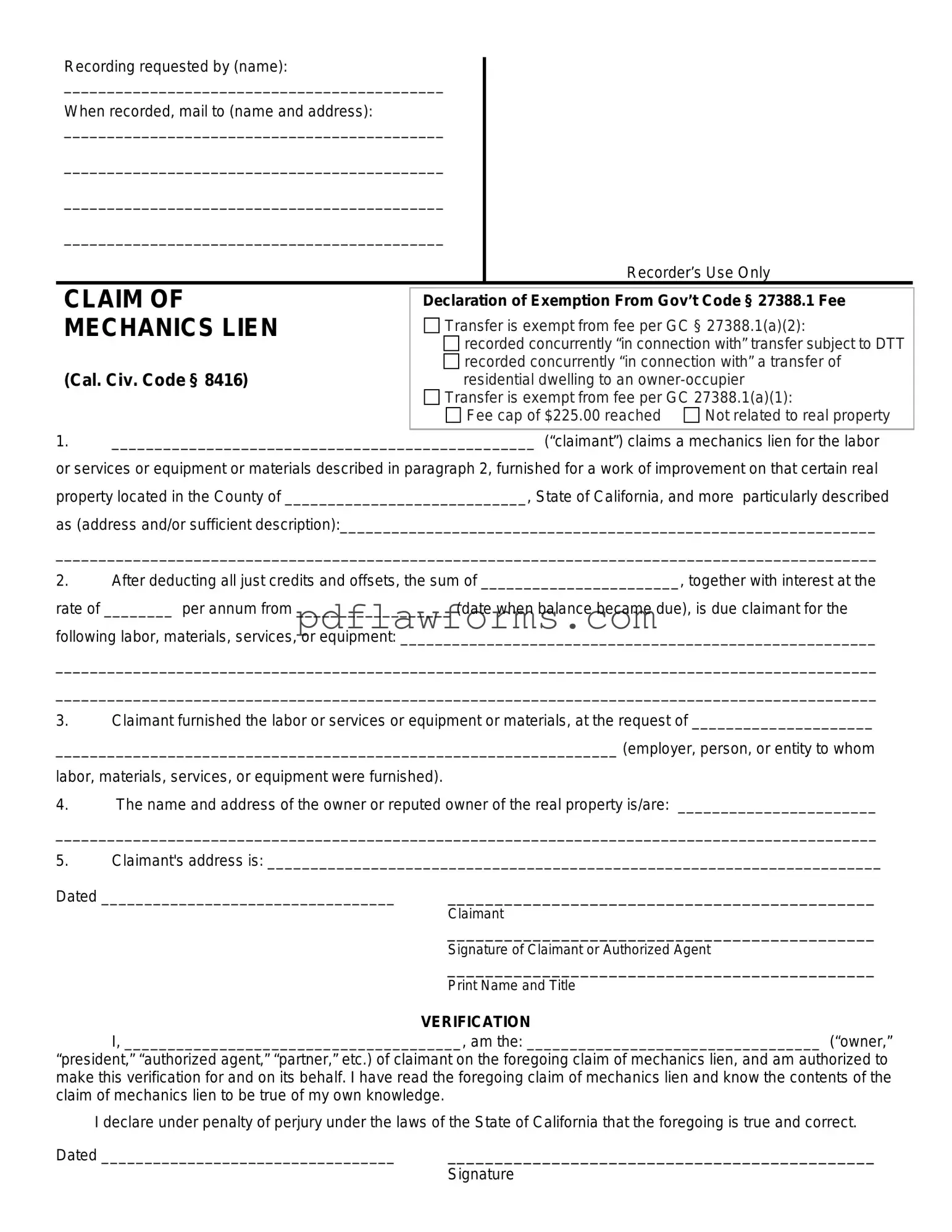Filing a Mechanics Lien in California can be a crucial step for contractors, subcontractors, and suppliers seeking payment for their work. However, many people make common mistakes when completing the necessary forms. Understanding these pitfalls can help ensure that your lien is valid and enforceable.
One frequent mistake is failing to include the correct property description. The property must be identified accurately, including the address and any legal descriptions. Omitting or misrepresenting this information can lead to complications or even the dismissal of the lien.
Another common error is not providing the correct dates. The timeline for filing a Mechanics Lien is strict. If the dates of work completion or service are incorrect, it could invalidate the lien. It's essential to ensure that all relevant dates are accurate and properly documented.
Many individuals also overlook the requirement for proper signatures. The lien must be signed by the claimant or their authorized agent. A missing signature or an unauthorized signatory can render the lien ineffective, preventing recovery of owed funds.
Additionally, some filers neglect to include the necessary supporting documents. Attachments such as contracts, invoices, or payment records can strengthen your claim. Without these documents, the lien may lack the necessary evidence to support the claim.
Another mistake is failing to serve notice to the property owner. California law requires that the property owner be notified of the lien. Not providing this notice can lead to disputes and may invalidate the lien.
Some people make the error of submitting the lien to the wrong county office. Each county has its own recording office, and submitting the lien to the wrong location can delay the process or result in a rejection of the filing.
Another common issue is missing the deadline for filing. California has specific time frames within which a Mechanics Lien must be filed, depending on the type of work performed. Missing these deadlines can mean losing the right to file a lien altogether.
Moreover, failing to follow up on the lien can be detrimental. After filing, it’s important to monitor the status of the lien and take further action if necessary. Ignoring this step may lead to missed opportunities for resolution.
Lastly, many individuals do not consult with a legal professional before filing. While it is possible to fill out the form independently, seeking legal advice can help avoid mistakes and ensure compliance with all relevant laws and regulations.
By being aware of these common mistakes, individuals can improve their chances of successfully filing a Mechanics Lien in California and ultimately receiving the payment they deserve.
